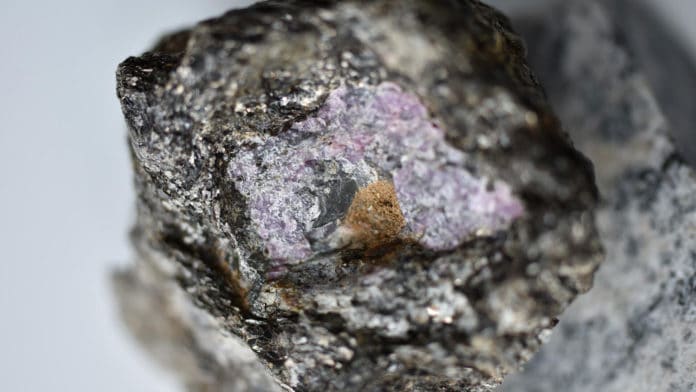Greenland has the oldest known deposits of rubies in the world. While studying the geology of rubies to understand the conditions necessary for their formation better, scientists found carbon residue once ancient life.
The scientists, led by Chris Yakymchuk, professor of Earth and Environmental Sciences at Waterloo, found a 2.5 billion-year-old ruby sample. The sample was found to contain graphite, a mineral made of pure carbon. Further analysis revealed that the carbon indicates that it is a remnant of early life.
The discovery of graphite within the world’s oldest rubies surprised scientists. Hence, they analyzed the isotopic composition of the carbon atoms, which measures the relative amounts of different carbon atoms. More than 98 percent of all carbon atoms have a mass of 12 atomic mass units, but a few carbon atoms are heavier, with a mass of 13 or 14 atomic mass units.
Based on the increased amount of carbon-12 in this graphite, scientists concluded that the carbon atoms were once ancient life, most likely dead microorganisms such as cyanobacteria.
Yakymchuk said, “The graphite inside this ruby is unique. It’s the first time we’ve seen evidence of ancient life in ruby-bearing rocks. The presence of graphite also gives us more clues to determine how rubies formed at this location, something that is impossible to do directly based on a ruby’s color and chemical composition.”
The analysis revealed that graphite was found in rocks older than 2.5 billion years ago. During this time, oxygen was not abundant in the atmosphere.
Scientists also found that this graphite not only links the gemstone to ancient life but was also likely necessary for this ruby to exist at all. The graphite changed the chemistry of the surrounding rocks to create favorable conditions for ruby growth.
Journal References:
- Chris Yakymchuk, Vincent van Hinsberg, Christopher L. Kirkland, Kristoffer Szilas, Carson Kinney, Jillian Kendrick, Julie A. Hollis. Corundum (ruby) growth during the final assembly of the Archean North Atlantic Craton, southern West Greenland. Ore Geology Reviews, 2021; 138: 104417 DOI: 10.1016/j.oregeorev.2021.104417
- Vincent van Hinsberg, Chris Yakymchuk, Angunguak Thomas Kleist Jepsen, Christopher L. Kirkland, Kristoffer Szilas. The corundum conundrum: Constraining the compositions of fluids involved in ruby formation in metamorphic melanges of ultramafic and aluminous rocks. Chemical Geology, 2021; 571: 120180 DOI: 10.1016/j.chemgeo.2021.120180
